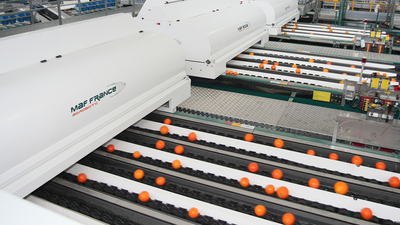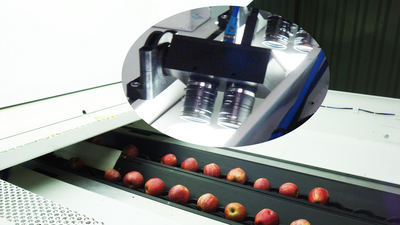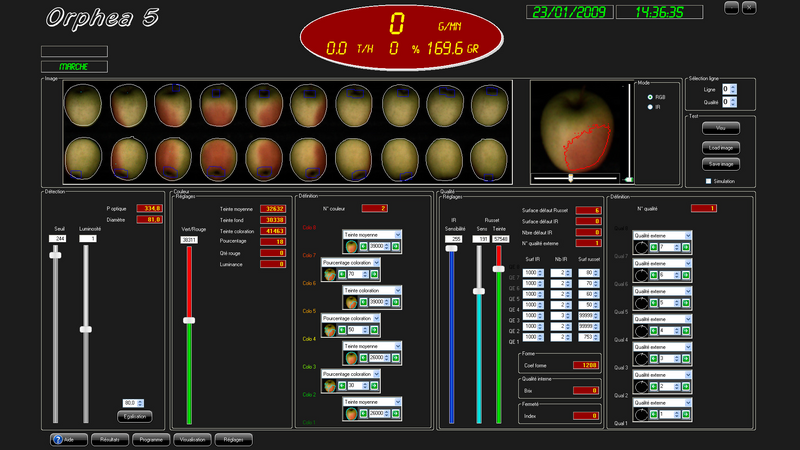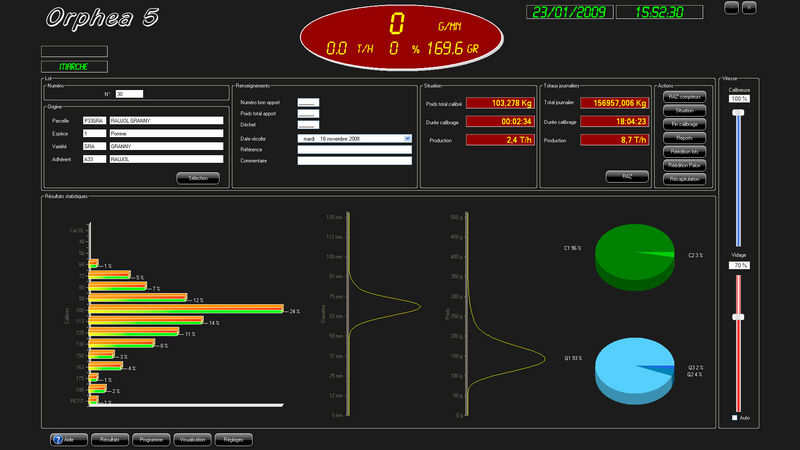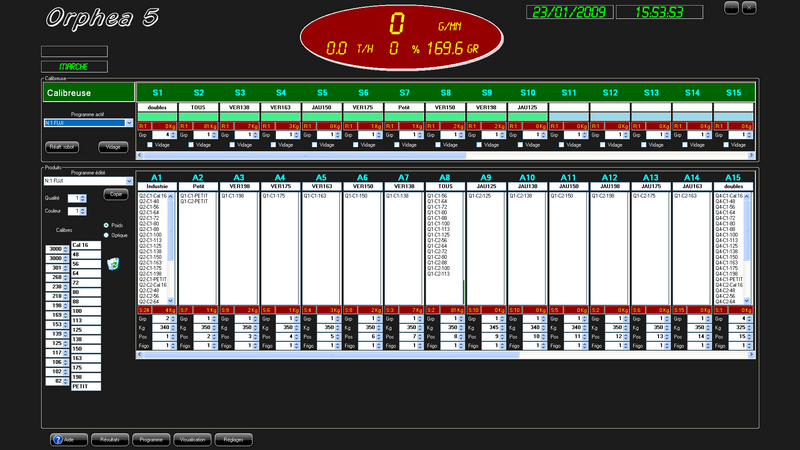Case Studies
A Quest For The Best – Looking Fruits And Vegetables, That Is!
Matrox Imaging Library (MIL) ensures that only the highest quality produce reaches grocery store shelves
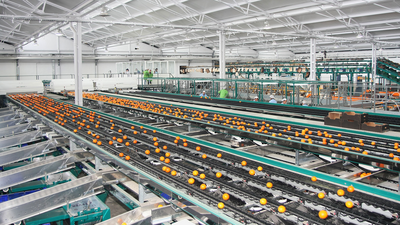
The sizing machine lets a packer in Valencia, Spain accurately grade oranges according to pre‐established quality and color criteria to meet market requirements. This machine processes 40 million kilograms of oranges per year. Source: MAF Roda Agrobotic.
It is estimated that more than 30 per cent of fruits and vegetables grown for North American consumers are discarded before they reach grocery store shelves because of "cosmetic imperfections". An apple is too small, a pear is the wrong color or a cucumber is misshapen. Imperfect produce that does manage to reach supermarkets remains unsold for the most part and ultimately ends up in landfill sites. In this era of skyrocketing food costs and global shortages it is in everyone's best interests—growers, packers, distributors, retailers, and consumers—to reduce this waste.
MAF Roda Agrobotic is a French multi-national that designs and manufactures grading, packing, washing, bagging, and palletization systems for fresh fruit and vegetable packing houses. MAF Roda helps packers improve processing efficiency, while ensuring that produce is the correct size, shape and color, as well as being free from defects.
History
In 1962, MAF Roda began manufacturing mechanical graders in the largest fruit growing area in southwest France. In 1979, Philippe Blanc, a graduate of École Nationale d'Ingénieurs (Tarbes, France), along with ten fellow students, produced the first electronic and automatic grading systems to replace those mechanical graders.
Today, MAF Roda has 18 subsidiary companies and 40 agents located in the most abundant food producing regions in the Americas, Europe, Africa, and Asia. The family-owned and -operated business is now overseen by a third generation—Philippe Blanc's five sons. In 2008, MAF Roda annual sales were 90732K€ making it one of the largest manufacturers of fruit and vegetable handling equipment in the world.
Sizing and sorting fruit
MAF Roda designs and manufactures several different types of "sizers". These are conveyors with 1 to 10 parallel lanes and 1 to 64 outlets that process different types of fruit ranging from cherry tomatoes to melons. The number of lanes determines the processing capacity of the machine—10 to 15 pieces of fruit per second, per lane—and the number of outlets defines the number of categories that the machine can sort.
One of these systems is the GLOBALSCAN®, a sophisticated, fully automatic vision system that sorts fruit as it moves along a sizer. The system allows packers to accurately grade fruit according to pre-established quality and color criteria to meet market requirements. Processing and packaging costs are reduced as substandard fruit is immediately removed from production batches.
The vision system includes proprietary double sensor CMOS high-resolution cameras (one color and one infrared camera per lane), acquisition boards, and LED lighting. Twenty color pictures and 20 infrared pictures are taken of each piece of fruit as it moves and rotates forward—covering 100% of its surface. The vision system can perform optical sizing (equatorial or maximum diameter, volume integration), color sorting (eight different criteria), and detection of external defects on the fruit.
The images are then processed using the Matrox Imaging Library (MIL) toolkit. Binarization and blob analysis are used to separate the fruit from its background and to obtain dimensions like Feret diameters and elongation, for example. The HLS (Hue, Luminosity, Saturation) color space conversion and statistical functions are used for color processing. And convolutions and custom-designed algorithms recognize stems and cores, and reject fruit with defects on the skin like black spots or russet.
The system's intuitive user interface, which includes a 3D display, lets operators adjust quality and sorting parameters in real-time. These parameters can be stored for future use. GLOBALSCAN® gives production managers the ability to analyze the data gathered from the vision system and generate statistics by producer, by orchard or field, by species, or by variety of fruit. Reports provide metrics on the batch of fruit that is being processed including size, weight, diameter, color, and quality.
Off-the-shelf versus proprietary
Prior to using MIL, MAF Roda engineers developed their own image processing library in C, including optimizations using MMX/SSE instruction sets. Initially, the company worried that they would sacrifice performance when they started development using an off-the-shelf library like MIL, because these tools are designed for a more general use than MAF Roda's "homemade" functions.
"We were happy to see that MIL functions are very fast and powerful. We can now spend more time on our specific job using MIL functions instead of wasting time writing our own functions from scratch. Plus, the stability of the Matrox Imaging Library is also very good," explains Michel Rodière, Electronics Department Manager. " MIL definitely helped our productivity. Compared with what we did before, MIL saves programming time and MIL code is easier to read and understand when several programmers work on the same project."
Looking forward
MAF Roda began evaluating Matrox Imaging Library (MIL) 8 at the end of 2007. The first production machine made its debut November 2008. They have begun the process of moving to MIL 9 to benefit from the native .NET development and 64-bit Windows® support. They are also looking at making use of the color analysis tools available as of MIL 9.
For more information contact Media Relations.

